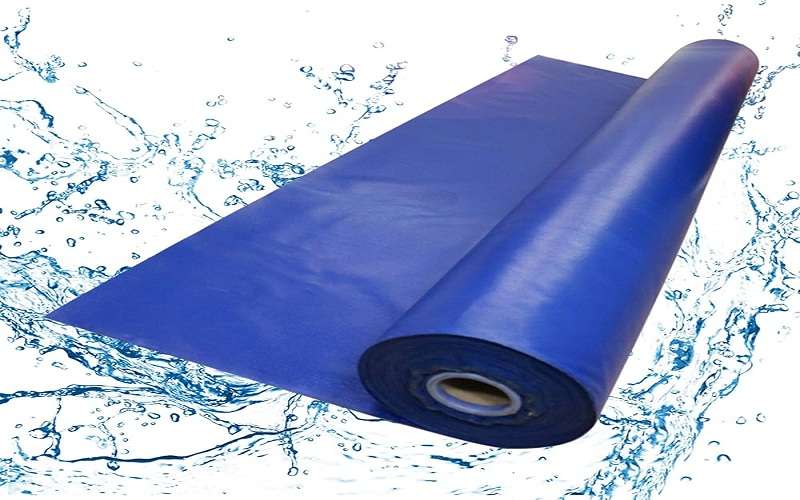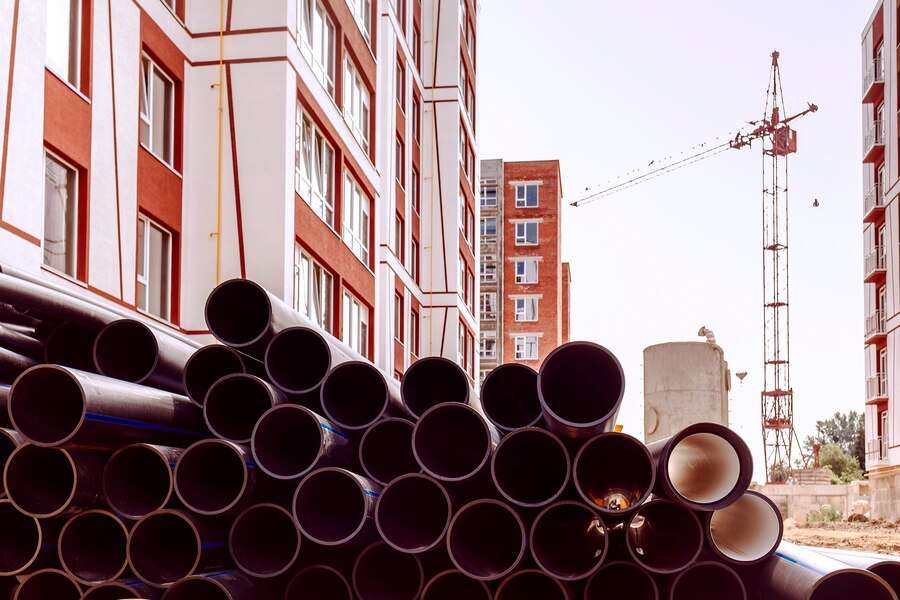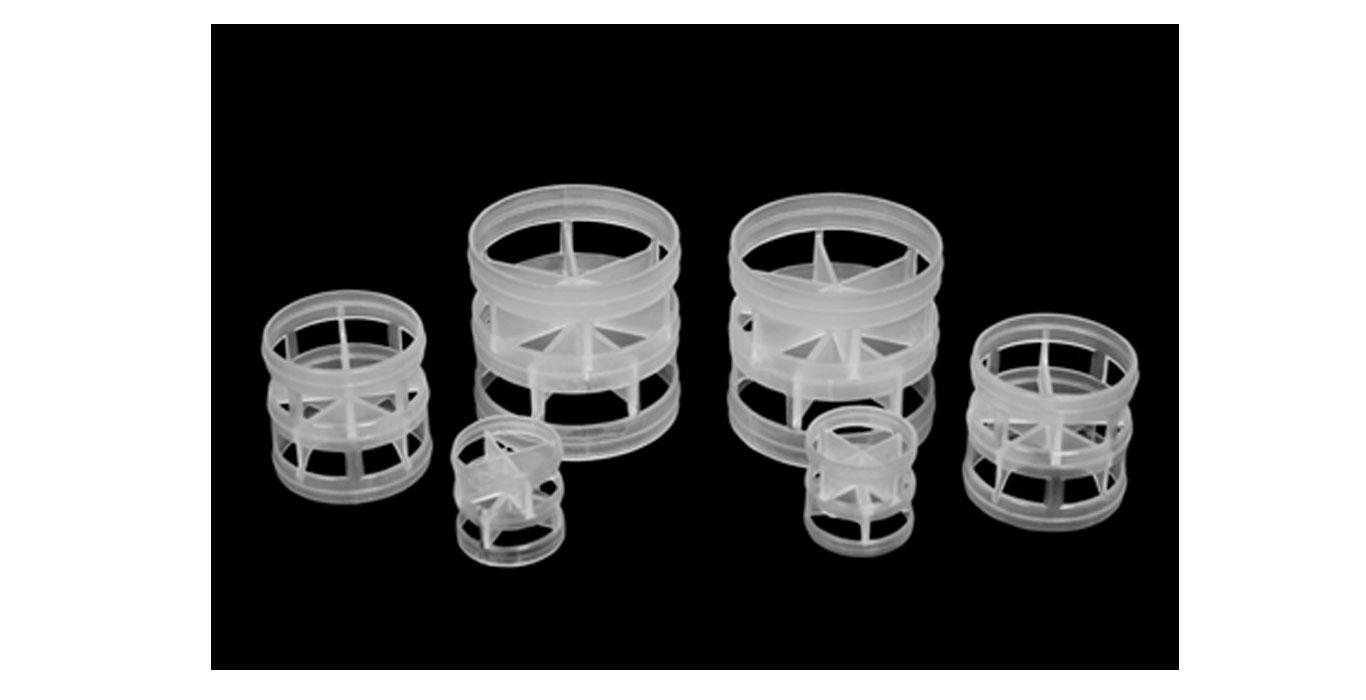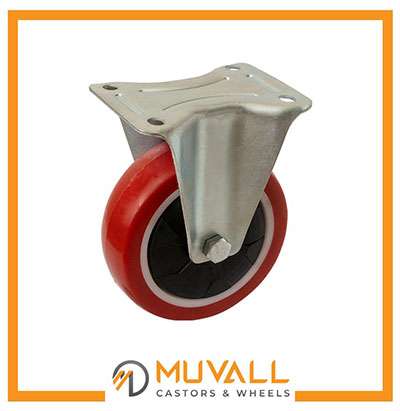In modern industries, valve exporters are often referred to as the backbone. Most of the things we use are either made of iron or steel or have been manufactured using their tools and machinery.
Steel is used in many products, including ships, trains, trucks, and automobiles. The safety pins as well as the needles that we use are also made of steel.
Importance of industries in Modern World
In the modern world, industries play a more important role than ever before
In the modernization of agricultural activities, industrial growth supplies machinery, chemicals, irrigation facilities, insecticides, and pesticides.
In addition to reducing unemployment and poverty, industrial development also stimulates economic growth.
Developing industries can generate foreign exchange by exporting finished products, thereby expanding commerce and trade.
Industries play an important role in the development of a country. Developing countries with strong industrial sectors have shown more economic growth, have improved national income, and have improved living standards. America and Japan have benefited greatly from industrialization by eliminating unemployment, which has improved their economic conditions.
Vital Role of Valves in Industries
Controlling and regulating process flows helps ensure safety in process plants. Generally, the process industry involves converting bulk resources into finished goods. In these industries, the flow of various materials, such as oil, gas, water, or pulp, is controlled by a large number of pipes. This is where valves play an important role in the industry.
It is sometimes necessary to use valves that are highly durable and reliable, even when the flow is quite hazardous or erosive. No matter what liquid they come in contact with, they must function steadily and efficiently. From bioproduct mills to gold mines and oil refineries, valves play a vital role in productivity and safety.
A valve ensures the safe and reliable flow of fluids wherever they move in a pipe. It happens in most process industries – and even in the manufacture of unexpected products or materials. In various industries around the world, millions of valves are working day and night. We’ll talk more about valves and uncover some fascinating information.
Do you know where the valves are?
Everywhere we look, they are present, including in our homes. When you open the tap to drink water, you’re controlling the flow of water through a valve. This is only one example. What other ways do valves play a role in our everyday lives?
In the morning, when you open the newspaper, valves were used to produce the paper. What about some sugar in your coffee? Valves are also needed in sugar mills. Driving to work is part of your daily routine? Fuel is made with a lot of valves in the petroleum industry.
Is it lunchtime yet? yes, Valve also plays an important role in the process of preparing food before it reaches your plate. After work, how about meeting up with colleagues? No matter what soft drink, milk, or beer, drink you enjoy, valves have been an integral part of its production. You forgot to call home, didn’t you? Mineral and metal processing plants, which use valves in their processes, provide the metals for your phone.Are you going for an evening jog? Without valves, you would not be able to wear sneakers. Also, valves are necessary to make textiles, like the clothes you wear! At the end of the day, you can be sure that even power plants require valves to keep their lights on. Hence, we are surrounded by valves 24/7.
Many kinds of valves are used today as required by industry, and they can be classified in a variety of ways
A valve is classified as an isolation valve, a regulation valve, a non-return valve, and a special valve according to its purpose and function.
ISOLATION VALVES:
A wide variety of valves can be used as isolation valves, including gate valves, ball valves, plug valves, piston valves, diaphragm valves, butterfly valves, and Pinch valves
NON.RETURN VALVE:
A non-return valve is a check valve that uses two kinds of valves, such as a swing check valve and a lift check valve.
REGULATION VALVE:
A regulation valve can be a globe valve, a needle valve, a butterfly valve, a diaphragm valve, a piston valve, or a pinch valve.
SPECIAL VALVE:
Special valves perform functions other than two-way isolation, such as multi-port, flushing, pressure relief, breather, and many others. In addition, they are used under special circumstances.
Ball Valve
Ball valves are shut-off valves controlled by rotating balls with bores, which control liquid or gas flow. A quarter turn (90 degrees) around the ball’s axis allows the medium to flow through or block it. In addition to their long service life, they provide reliable sealing even when the valve is not in use for a long period of time. Because of this, they are more popular as shutoff valves than gate valves, for instance. Comparatively, ball valves are more resistant to contamination than most other types of valves.
Control valves can also be made from ball valves in special versions. Compared to other types of control valves, this application is less common because the flow rate can be controlled with relatively limited accuracy. However, the valve also has some advantages. The seal remains reliable, even when the media is dirty.
Plug Valve
Plug valves are manual valves with a quarter-turn rotary motion. To permit or prevent straight-through flow, a cylindrical or tapered plug (plug-shaped disk) is used. Fluid flows through the opening plug of a plug valve with little turbulence because the ports are straight. It is possible to flow in either direction with a fully open or fully closed valve.
In many different fluid services, plug valves have been used. The performance of these pumps is good in slurry applications. In bubble-tight applications, they are used as on-off stop valves. In addition to air, gaseous, and vapor services, they are needed in natural gas and oil piping systems, food-processing, nonabrasive slurries, vacuum and pharmaceutical services, and a vacuum and high-pressure systems. They can be used for on-off valves, diverting services, and moderate throttling. Initially, plug valves were designed to replace gate valves since they can easily be opened and closed against the flow, unlike gate valves.
Butterfly valve
A butterfly valve is a quarter-turn rotational motion valve used in pipelines to shut off flow. The butterfly valve is often used to regulate flow. Although this can damage the valve disk and negatively affect its sealing properties, we do not recommend it. Flow isolation systems are used in a variety of process media and industries, including water supply, collection, distribution, and pumping stations, and have a wide range of applications. As a result of their simple construction and compactness, their valves are lighter, less expensive, have smaller footprints, and are faster to operate than other valve families.
Control Valve
Control valves are electrical devices that regulate or manipulate fluid flows such as gas, oil, water, and steam.
An example of a final control element is an integral part of a control loop. Most industries today use the Control Valve as their final control element.
Control valves regulate the flow rate of fluid by changing the position of their plugs or disks. In process control valves, a variable is maintained as close to its set point as possible. Flow rate, pressure, and temperature are the most common controller set points. Control valves can also be used to control product parameters like density, concentration, liquid level, and others.
Valve bodies, actuators, positioners, and accessories make up a control valve installation. Body parts include the bonnet assembly and trim. With its design, it can withstand static and differential fluid pressure, allow fluid flow, provide pipe-connecting ends, and support seating surfaces and valve closure elements. A valve is opened or closed by an actuator, which can be pneumatically, hydraulically, or electrically powered. A positioner monitors and controls actuator movement in order to maintain a set point. The accessories include electro-pneumatic transducers, pressure regulators, handwheels, position indicators, and limit switches
Piston Valve
Piston valves are used to control fluid flow along tubes or pipes by moving a piston linearly within a chamber or cylinder. Steam, gas, and other fluid services are controlled by piston valves, which can be fully open or fully closed. The purpose of these valves is to prevent excessive seat wear caused by fluids. In most cases, piston valves are operated manually, but sometimes hydraulic or electric mechanisms are employed. When the valve body is permanently installed, piston valves require less maintenance. Throttling applications are not suitable for piston valves, which must be fully opened or closed. A fully opened valve exposes only the bottom face of the piston to fluid, while the upper sealing rings protect the rest of the body. Fluid flow protects the sealing surfaces from erosion.
Pneumatic Valves
Pneumatic actuators convert compressed air into mechanical motion by converting energy into motion. Pneumatic actuators are also known as pneumatic cylinders, air cylinders, and air actuators within the industry.
Pneumatic actuators can convert energy into linear or rotary motions by using pistons, cylinders, valves, and ports. It depends on whether the application uses a pneumatic rotary actuator or a linear actuator.
In high temperature and steam applications, linear actuators are best suited to fit angle seat valves, while pneumatic rotary actuators are better suited to fit quarter-turn valves depending on their specification.
Typically, pneumatic actuators require some form of compressed air or pressurized gas to operate. Upon exceeding the required pressure levels, it creates a controlled kinetic movement of a piston or gear that can be directed straight or circularly depending on the requirements.
Hydraulic Valves
Hydraulic valves direct a liquid medium, usually oil, through your hydraulic system. A spool determines the direction of oil flow. Only valves allow a hydraulic system to function as required. It is therefore important to choose the appropriate hydraulic valve for your intended application. A hydraulic system’s maximum flow and maximum pressure determine the valve’s required size.
The hydraulic valve directs a liquid medium through your hydraulic system properly.
There are many types and sizes of hydraulic valves, and they are governed by multiple international standards. Various mounting styles are available for hydraulic valves, such as mounting in pipelines, mounting with threaded connections as cartridge valves, mounting on subplates, or mounting on flanges. Valve types can be categorized into three categories: pressure control valves, flow control valves, and directional control valves. In the hydraulic system, each valve performs a different function.
Electric Valves
Motorized valves are valves whose mechanisms are controlled by an electric actuator. Suitable for large valves or remote fluid control applications such as aircraft deicing, agricultural irrigation, or automated fire suppression, this valve type is well suited to very large valve types or remote fluid control applications. Most valve types are suitable for motorized applications, including gate, ball, and butterfly valves. Motorized valves can also be used for remote flow control applications with incremental inputs. A motorized valve’s internal fluid control mechanisms are generally identical to those of its manual counterpart; the only difference is in its actuation inputs.
Key Factors to be check before Choosing the Valve Supplier
In industrial systems and applications, valves are one of the most important tools for controlling flow. Industrial productivity and efficiency can be optimized with their help of them. The purpose of this article is to review some important factors to consider when selecting a valve supplier.
Inventory
How large is the market for the valve manufacturer/distributor you selected? What is the amount of inventory they carry? A large industrial distributor always meets deadlines and has superior quality standards. The right products will be delivered to you at the right time if you establish a relationship with a large-scale industrial distributor. It’s especially important during system shutdowns or emergencies. If you deal with a reputable company with a large inventory, you will be able to get the products exactly when you need them.
Preventive Maintenance
Maintenance directly affects the durability, performance, and efficiency of your control valves. Make sure you check out the services of your supplier or schedule a meeting with them to learn about their product maintenance procedures. Ascertain that they understand your system requirements and maintenance needs and are prepared to perform valve maintenance operations when necessary. Make sure that the maintenance tasks won’t cause any disruption to your regular operations by understanding their work ethic.
Valve Repair
After some time of regular usage, your industrial valves will require repair, regardless of how well-maintained they are. Make sure that your valve distributor has a good supply of replacement parts for when you need repair parts. Ensure that your selected company’s valve manufacturing technicians are highly qualified, experienced, and professional. The malfunctioning of valves can damage your system and reduce its productivity to a great extent.
ISO Certified Products
Can you afford to buy substandard valves that do not meet the quality and safety requirements? No, we thought so, so make sure your chosen valve supplier complies with ISO and industry standards before making a purchase.
Understanding of Industrial Systems
A consultancy service is likely to be necessary for the proper selection of valves for your system. You should make sure your valve supplier can perform a detailed assessment of your system and understands how different components can affect its efficiency. A valve’s performance, for instance, depends heavily on its actuator. Ensure your supplier understands this relationship and recommends flow control products accordingly.
Commitment to Safety
In terms of valve installation, safety is one of the most important factors to consider. Ensure that your valve supplier understands these recommendations and that the valves you choose meet local regulations.
Product range
Our products include a wide range of pneumatically operated and manually operated valves such as Ball Valve, Butterfly Valve, Control Valve, Solenoid valves, etc. Our valve products have received the approval of ISO, API & other certificates over the past 20 years. For more information about our product range, please visit https://www.airaindia.com/valve-automation/pneumatic-actuators-manufacturer-and-exporters/
Production Capacity
1. Pneumatic actuator specification according to ISO 5211.The range ranges from 7.5 NM to 5000 NM, and the quantity per year ranges from 8000 NOS to 20,000 NOS.
- A MOTORIZED ACTUATOR designed to meet customer specifications
A maximum quantity of 35000NM (approx. 3) per year is available (approximately 3000 units).
3. ELECTRO PNEUMATIC / MOTORIZED, 2 WAY / 3WAY / 4WAY BALL VALVES Designed as per customer specification and The range ranges from ?? TO 14″ Qty Per Year (Approx) 8000 NOS
4. ELECTRO PNEUMATIC / MOTORIZED BUTTERFLY VALVE is designed as per customer specification. The range ranges from 1?? TO 48?, and the quantity per year ranges from 3000 NOS.
5 . CONTROL VALVES, 2 WAY/ 3 WAY were designed as per customer specification with a range of 12″ to 12″ and a quantity of Year (Approx)6100 NOS.
6. A SOLENOID valve can be designed to customer specifications and ranges from ?? to 6″ in diameter. Quantity per year (approximate) 4000 NOS.
7. Non-slam check valves are designed in accordance with customer specifications
It ranges from ?? to 10″ with a quantity of approx. 3000 NOS per year
8.. PNEUMATIC CYLINDER designed according to customer specifications
The bore size ranges from 25MM to 600MM and the quantity per year is approximately 10,000 NOS
9. A MANUAL BALL/BUTTERFLY VALVE is designed according to the specifications of the customer
A range of ?? to 24″ Qty Per Year (approximately) 5000 NOS
10.PRESSURE REDUCTION / SAFETY VALVES are also designed according to customer specifications The range ranges from ?? TO 10? Qty Per Year (Approx)5000 NOS
Quality Parameters
To meet our customers’ stringent & ever-increasing quality requirements, we have ISO 9001: 2000 certified company.
Hydro testing machines with ultramodern technology.
PMI stands for Positive Material Identification.
Testing of all NDT systems.
Testing of fugitive emission leaks with a helium mass spectrometer.
Testing in a cryogenic environment.
Fire-safe test equipment to meet API 607 & API 6FA requirements.
Testing under vacuum.
The equipment included surface roughness comparators, surface cleanliness comparators, wet film thickness gauges, dry film thickness gauges, and adhesion testers.
Certificates
Various organizations issue certificates in this field. An organization’s officers inspect a company’s product from all angles before issuing a certificate. When the testing and full inspection of the product are completed and the results are assertive. This is followed by certification for that specific product only for that company. Although it seems very simple, passing the parameters with a random product can be a challenge. Valve manufacturers can have multiple certificates for their various products, as we can see here. When a main product is accompanied by accessories, it’s helpful to have certificates for both the main product and accessories. Whenever we check automation valves, look for solenoid coils and pneumatic actuators that are CE-approved or ATEX-certified. A few of the most usable products are certified by some famous certificates.
CE- Approval
An CE mark indicates that a product complies with relevant European directives. This requirement applies to a wide range of products sold within Europe or exported there. It is the manufacturer’s responsibility to ensure that a CE-marked product meets all health, safety, performance, and environmental requirements in Europe. Aira Euro Automation has received CE certificates for its solenoid, positioner, ball valves, and micro limit switch boxes.
EIL ? Engineers India Limited
An Indian government firm operates Engineers India Limited. A Ministry of Petroleum and Natural Gas is in charge of it under Indian government control. It is especially important for refinery valves to have this certificate. Companies like ONGC, GAIL, and Reliance Petroleum welcome EIL-certified valves manufacturers in India. This certificate has been awarded to Aira Euro Automation for its multiport ball valves, which are ideal for mixing and diverting.
SIL ? Safety Integrity Level
A safety integrity level known as SIL 3 is defined in IEC 61508. The risk reduction factor is between 1.000 and 10.000 failures on demand, and the probability of failure is between 10-8 and 10-7 per hour. Therefore, a security function’s acceptable failure level is a quantitative measurement of its safety and reliability. In accordance with IEC 61508, there are four safety integrity levels: SIL 1, SIL 2, SIL 3, and SIL 4. Industrial operations with SIL 3 are economically feasible in most cases.
In addition to SIL 3, Aira Euro Automation is certified with SIL 3 for Trunnion Ball Valves, Floating Ball Valves, Concentric Butterfly Valves, Double Eccentric Butterfly Valves, Triple Eccentric Butterfly Valves, and Pneumatic Rotary Actuators.
API ? American Petroleum Institute
In the United States, the American Petroleum Institute is the largest trade association for the oil and gas industry. The company produces, refines, and distributes petroleum, as well as representing nearly 600 companies. While EIL is a requirement, valve manufacturers must also follow API to ensure foreign customers. Several of Aira Euro Automation’s ball valves and butterfly valves are API-certified.
IBR ? Indian Boilers Regulations
The Indian Boiler Regulations (IBRs) govern the materials, construction, inspection, and testing of boilers and boiler components for compliance by boiler manufacturers and users. IBR approval is required for any device to be used in boilers. Safety valves, also known as pressure relief valves, are generally required to be IBR-approved.
ATEX Certificate
According to the manufacturer’s instructions, ATEX-certified equipment operates safely in potentially explosive environments. The European Union (EU) and the European Economic Area (EEA) require ATEX certification for explosive atmosphere equipment. ATEX-certified products are in demand among Indian and Asian industrialists. With Aira Euro Automation, you can purchase ATEX-certified pneumatic actuators, coils, and limit switches.
As a result of these certificates, valve manufacturers certify that their products are genuine and will perform as promised. Aira Euro Automation has acquired additional quality performing documents and certificates in addition to these certificates. They boast that they are ready for third-party inspection of their products if buyers request so.
Portfolio
There is no doubt that our valve product portfolio is built on remarkable innovations. Having a reputation for quality products is not a coincidence. Our extensive knowledge of industry and applications allows us to offer both mechanical valve features and advanced digital diagnostic features. Our valves have been supplied to fertilizer, ONGC, chemical plants, nuclear plants, fossil & cogeneration power, LNG, cryogenics, petrochemicals, pharmaceuticals, etc.
After Sales Services
In case of any problem with our valves, we provide a complete after-sales service
We also offer a four-year warranty on many of our products
In many cases, we replace the product if the customer isn’t satisfied
Conclusion
Are you ready to get high-quality industrial valves?
Aira Euro Automation is a leading manufacturer, supplier, and exporter of industrial valves in India, designing, assembling, testing, and supplying high-quality valves. Our range of industrial valves includes Ball valves, Butterfly valves, Control valves, and Solenoid valves. High-pressure valves are also available to control the high flow of media pressure in residential and commercial apartments. Our valves are used in applications such as air, water, oil, gas, and steam. As a one-stop solution for industries that require high-quality fluid control devices, we supply our products to Saudi Arabia, South Africa, Yemen, Oman, UAE, and many African countries. In addition to being durable, customizable, economically priced, and 100% tested, all of our products are manufactured under ISO standards.
You are welcome to contact our representatives at one of the best valve manufacturers if you would like to learn more about what we offer.









